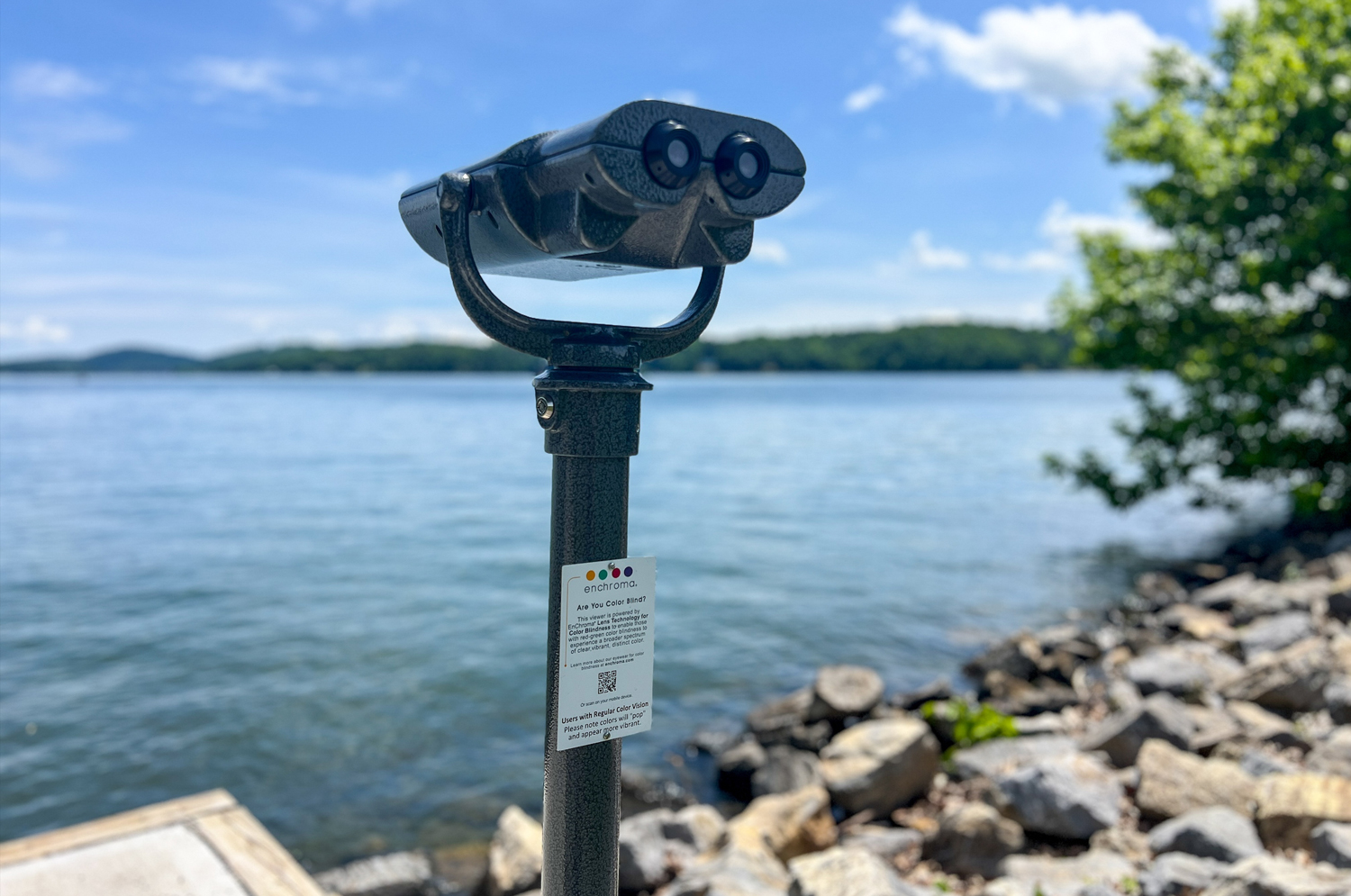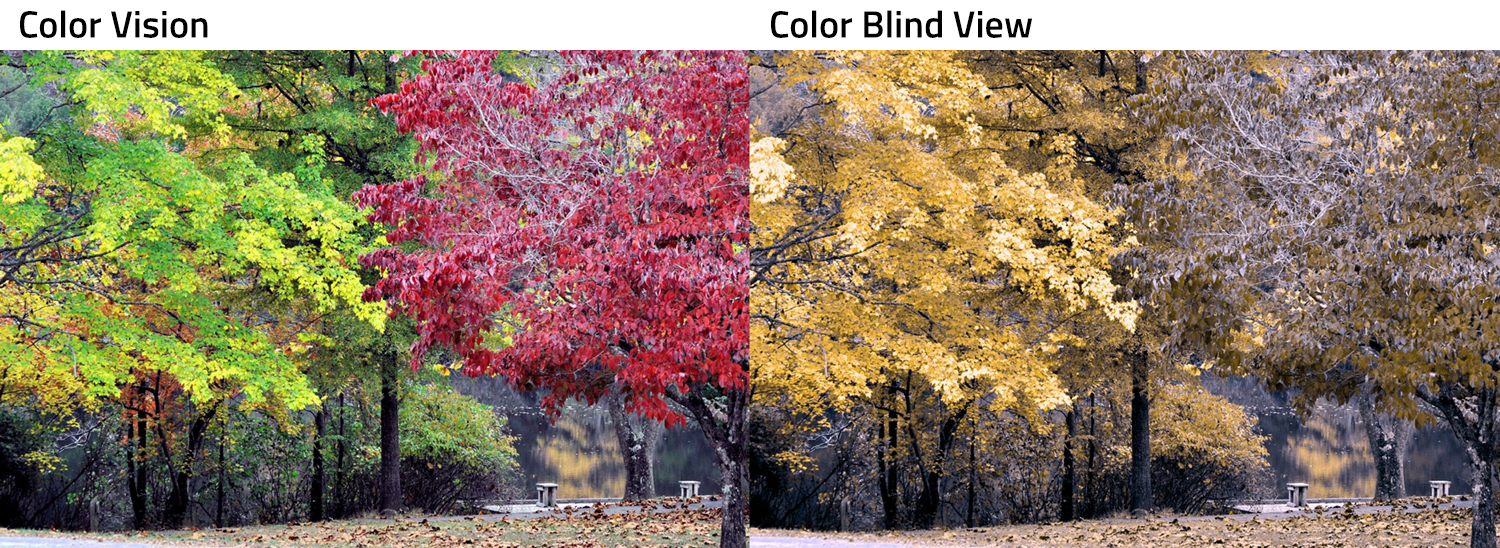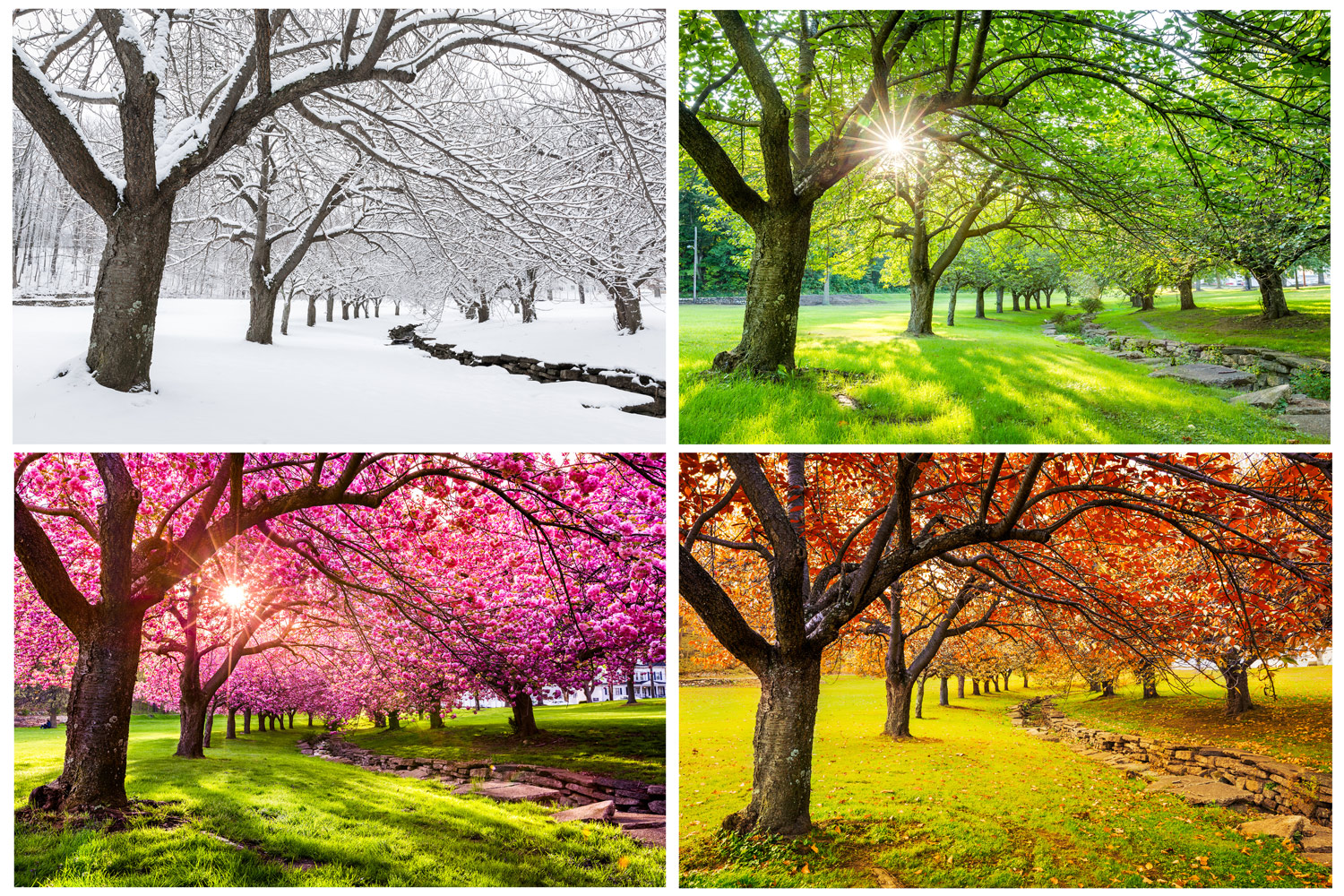Bringing Colors to Life!
Virginia’s state parks have viewfinders that give people with color blindness the chance to enjoy autumn leaves.

Virginia Department of Conservation and Recreation
All of Virginia’s state parks now have special viewfinders like this one.
What’s the best thing about autumn? For some people, it’s the way the leaves turn different shades of red, orange, and yellow. But watching the leaves change color just isn’t the same for people who are color-blind. That’s why all of Virginia’s state parks now have special viewfinders for people with red-green color blindness.
What Is Red-Green Color Blindness?
Most people with color blindness can see colors, but they see them in a different way than others do. People with red-green color blindness do not see some shades of red, green, or both. The colors or shades they can’t see sometimes look like other colors.
A Park Ranger with Color Blindness
Ethan Howes has color blindness. Howes, chief ranger at Natural Tunnel State Park in Virginia, has never been able to see all the bright colors in the park. So when he heard that a company called SeeCoast made viewfinders with special lenses for people with color blindness, he decided to put one in Natural Tunnel.
Many parks have viewfinders. They magnify scenery, meaning they give people a more up-close view of nature. But the special viewfinder lenses, made by a company called EnChroma, also allow people with color blindness to see more colors.
Howe remembers when a father and son who are both color-blind used the viewfinder at his park.
“They were just so giddy and excited about it,” Howes told Virginia Public Radio.

© Virginia State Parks, EnChroma; Courtesy of Virginia Department of Conservation and Recreation
This photo shows what Lake Anna State Park looks like to a person who is color-blind when they look through the viewfinder (left) and when they don’t (right).
Viewfinders at Every Virginia State Park
Now that the viewfinders have been installed at all 43 of Virginia’s state parks, many visitors are getting a chance to enjoy fall colors for the first time.
Melissa Baker is the director of Virginia State Parks. She had a chance to watch as a group of visitors with color blindness used one of the special viewfinders and looked at the brightly colored leaves.
“One of the gentlemen said, ‘Ya’ll see this all the time?’ It was really meaningful to be part of that. Being part of them seeing that richness of color for the first time,” Baker told Virginia Public Radio.

© Megan Roark, EnChroma; Courtesy of Virginia Department of Conservation and Recreation
This photo shows what Natural Tunnel State Park looks like to a person who is color-blind when they look through the viewfinder (left) and when they don’t (right).





